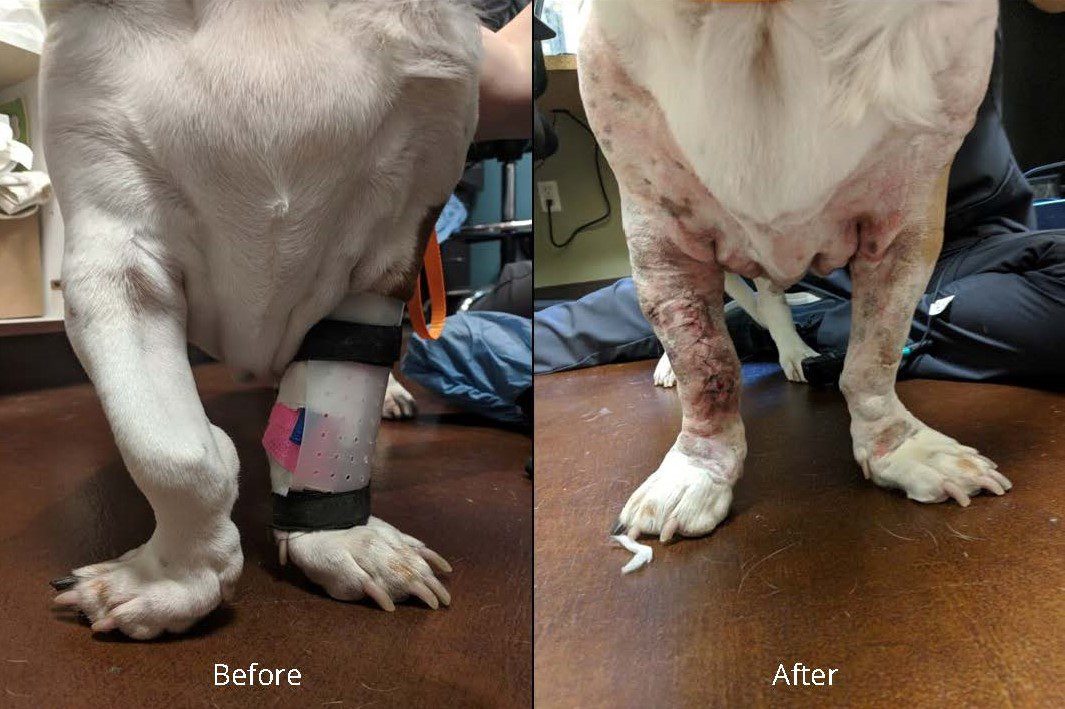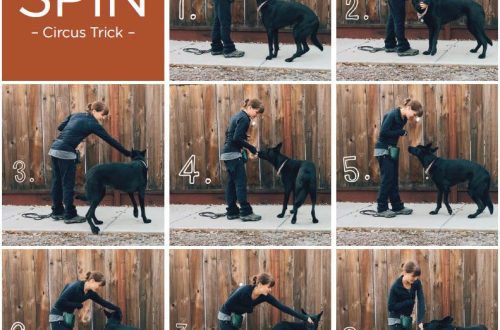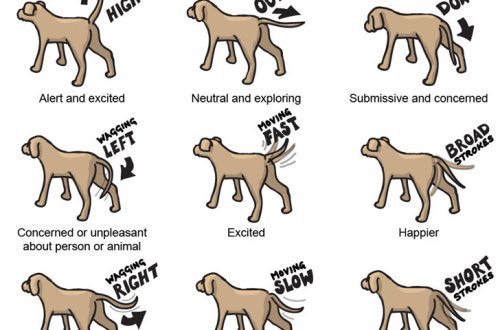
Angular limb deformities in dogs: types, causes and treatment
Angular deformity in dogs affects the bones. A common example of this is carpal valgus in dogs, which is an outward turn of the paw at the level of the wrist. In all cases, angular deformities of the extremities develop as a result of abnormal bone growth due to rapid growth rate, damage or injury to the cartilaginous growth plate. How does this affect the dog’s health?
Contents
Causes of Angular Bone Deformities in Dogs
All dogs have two long bones between the elbow and the wrist: the radius and the ulna. Injuries, such as those sustained in a car accident, fall or collision, are common causes of injury that can lead to angular deformities of the limbs in dogs.
Because of their unique anatomy, the growth plates of the ulna are at high risk of injury. Any such injury can cause the ulna to stop growing and the radius to continue to grow. Since these two bones are connected by ligaments, the radius is under pressure, resulting in a change in the angle of growth due to its attachment to the ulna. This gives the limb an abnormal twisted or twisted appearance.
Other causes of angular deformity include a diet that is poorly balanced in calcium and phosphorus, or feeding a puppy with excess calories and minerals. This is most often a problem in fast growing, large and giant dog breeds. In such cases, it is rapid bone growth combined with an unbalanced diet or an excess of minerals in the diet.
Types of deformities: varus and valgus deformity in dogs
According to Veterinary Specialist Dr. Derek Fox, MD, PhD, Diplomate of the American College of Veterinary Surgeons (DACVS), there are many types and categories of canine limb deformities. AT DVM360 Dr. Fox reports that the classification is based on the number of bone deformities in the dog, their direction, and their relationship to each other.
Among the most common types are the following two:
- Varus deformity in dogs. With this type of forefoot carpal deformity, the elbows stick out or arch more than the feet and other parts of the limb, and the foot may be turned inward.
- Valgus deformity in dogs. With valgus of the wrist, the dog’s front paws are turned outward or deviate from the line of the limb and the position of the body.
With any type of deformity, swelling of the elbow joint and pain can be observed.
This type of qualification, even veterinarians sometimes find extremely confusing. Owners do not need to master all this theory, it is important to remember that this ailment affects the lower part of the dog’s front paws. The rest can be entrusted to the veterinarian.
Clinical signs and diagnosis
Angular limb deformities in dogs affect both large and small breeds and most commonly develop in dogs under one year of age. In the book “Devicesdiseasesвsurgerysmallanimals» it is noted that in some breeds of dogs, such as in bull or dachshunds, paws are shortened by nature. However, this is not considered an angular limb deformity. Their short legs are part of the normal appearance of the breed, they are symmetrical and usually do not cause mobility problems.
However, even these dogs can develop angulation for the same reasons as other breeds. The main signs of this disease are unusual twisting or angularity of the limb, as well as lameness.
The veterinarian diagnoses the angular deformity based on the results of the orthopedic examination and radiographs of the affected forelimb. Most likely, he will take an x-ray of the affected limb, which is sometimes done under the influence of sedatives. This will allow the specialist to develop an accurate plan for the operation to correct the deformities.
Treatment of angular deformities of limbs in dogs
Treatment goals for canine hallux valgus, as with valgus valgus, include:
- Improved limb function.
- Increasing overall mobility.
- Relief of pain in limbs.
- Improving the appearance of the limb.
If the angular deformity of the limbs is insignificant and does not cause discomfort to the pet, treatment may not be required. Dogs with more severe deformities that adversely affect quality of life may need surgery. Its type will depend on the exact nature of the deformity detected.
In severe cases, part of the affected limb is removed to compensate for the incorrect angle of the limb or joint. Sometimes this removal can help on its own, but in more advanced cases, additional surgical devices, such as bone plates or screws, may be needed.
It is very important to follow your veterinarian’s instructions for post-surgery recovery, especially with regards to physical therapy and a nutritional plan. This will help to avoid complications during the healing period. A balanced dog food should contain all the necessary nutrients, including the right ratio of minerals. They are necessary for the pet to recover from surgery, so it is necessary to consult with a veterinarian before including any additional supplements in the pet’s diet.
Prognosis for angular deformities of the limbs in dogs
Angular deformities of the limbs can be avoided by feeding a growing puppy the right balanced food in the right amounts. Your veterinarian can recommend what to feed your dog and how much. When angular deformity is detected early and treated either with dietary changes or, if necessary, surgery, the pet will be more likely to avoid developing a serious deformity.
For more severe deformities, surgery may prevent or significantly delay the progressive development of degenerative conditions such as osteoarthritis. Delaying surgery can result in pain with movement and an inability to move normally. Although no operation is 100% successful, most surgical procedures for treating an angle deformity of the limbs are successful and can help the dog live a long and healthy life.
See also:
- Arthritis in Dogs: Symptoms and Treatment
- Helping your dog recover from injury or surgery
- Caring for a dog with a broken leg





